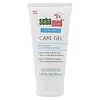What's inside
What's inside
 Key Ingredients
Key Ingredients

 Benefits
Benefits

 Concerns
Concerns

No concerns
 Ingredients Side-by-side
Ingredients Side-by-side

Melaleuca Alternifolia Leaf Water 50%
AntimicrobialCentella Asiatica Extract 25%
CleansingGlycerin
HumectantPropanediol
SolventButylene Glycol
HumectantNeopentyl Glycol Diheptanoate
EmollientPhenyl Trimethicone
Skin Conditioning1,2-Hexanediol
Skin ConditioningWater
Skin ConditioningHyaluronic Acid
HumectantSodium Hyaluronate
HumectantHydrolyzed Hyaluronic Acid
HumectantSodium Acetylated Hyaluronate
HumectantSodium Hyaluronate Crosspolymer
HumectantMadecassoside
AntioxidantCamellia Sinensis Leaf Extract
AntimicrobialCutibacterium Granulosum Ferment Extract Filtrate
EmollientAsiaticoside
AntioxidantAsiatic Acid
Skin ConditioningMadecassic Acid
Skin ConditioningSorbitan Isostearate
Emulsifying4-Terpineol
MaskingTocopherol
AntioxidantTromethamine
BufferingMicrocrystalline Cellulose
AbsorbentLecithin
EmollientMaltodextrin
AbsorbentAnhydroxylitol
HumectantXylitol
HumectantHydrolyzed Acacia Macrostachya Seed Extract
Skin ConditioningPentylene Glycol
Skin ConditioningPersea Gratissima Fruit Extract
EmollientXylitylglucoside
HumectantPyrus Communis Flower Extract
Skin ConditioningEthylhexylglycerin
Skin ConditioningAcrylates/C10-30 Alkyl Acrylate Crosspolymer
Emulsion StabilisingGlucose
HumectantAmmonium Acryloyldimethyltaurate/Vp Copolymer
Brassica Oleracea Italica Extract
AstringentBrassica Oleracea Capitata Leaf Extract
Skin ConditioningMedicago Sativa Extract
TonicTriticum Vulgare Germ Extract
Skin ConditioningRaphanus Sativus Seed Extract
Skin ConditioningBrassica Campestris Extract
Skin ConditioningHydrolyzed Glycosaminoglycans
HumectantSodium Hydroxide
BufferingBenzyl Glycol
SolventCellulose Gum
Emulsion StabilisingMelia Azadirachta Flower Extract
Skin ConditioningMelilotus Officinalis Extract
AstringentChaenomeles Sinensis Fruit Extract
AntioxidantCitrus Aurantium Dulcis Flower Extract
Skin ConditioningMelia Azadirachta Leaf Extract
Skin ConditioningRaspberry Ketone
MaskingMelaleuca Alternifolia Leaf Water 50%, Centella Asiatica Extract 25%, Glycerin, Propanediol, Butylene Glycol, Neopentyl Glycol Diheptanoate, Phenyl Trimethicone, 1,2-Hexanediol, Water, Hyaluronic Acid, Sodium Hyaluronate, Hydrolyzed Hyaluronic Acid, Sodium Acetylated Hyaluronate, Sodium Hyaluronate Crosspolymer, Madecassoside, Camellia Sinensis Leaf Extract, Cutibacterium Granulosum Ferment Extract Filtrate, Asiaticoside, Asiatic Acid, Madecassic Acid, Sorbitan Isostearate, 4-Terpineol, Tocopherol, Tromethamine, Microcrystalline Cellulose, Lecithin, Maltodextrin, Anhydroxylitol, Xylitol, Hydrolyzed Acacia Macrostachya Seed Extract, Pentylene Glycol, Persea Gratissima Fruit Extract, Xylitylglucoside, Pyrus Communis Flower Extract, Ethylhexylglycerin, Acrylates/C10-30 Alkyl Acrylate Crosspolymer, Glucose, Ammonium Acryloyldimethyltaurate/Vp Copolymer, Brassica Oleracea Italica Extract, Brassica Oleracea Capitata Leaf Extract, Medicago Sativa Extract, Triticum Vulgare Germ Extract, Raphanus Sativus Seed Extract, Brassica Campestris Extract, Hydrolyzed Glycosaminoglycans, Sodium Hydroxide, Benzyl Glycol, Cellulose Gum, Melia Azadirachta Flower Extract, Melilotus Officinalis Extract, Chaenomeles Sinensis Fruit Extract, Citrus Aurantium Dulcis Flower Extract, Melia Azadirachta Leaf Extract, Raspberry Ketone
 Reviews
Reviews

Ingredients Explained
These ingredients are found in both products.
Ingredients higher up in an ingredient list are typically present in a larger amount.
Glycerin is already naturally found in your skin. It helps moisturize and protect your skin.
A study from 2016 found glycerin to be more effective as a humectant than AHAs and hyaluronic acid.
As a humectant, it helps the skin stay hydrated by pulling moisture to your skin. The low molecular weight of glycerin allows it to pull moisture into the deeper layers of your skin.
Hydrated skin improves your skin barrier; Your skin barrier helps protect against irritants and bacteria.
Glycerin has also been found to have antimicrobial and antiviral properties. Due to these properties, glycerin is often used in wound and burn treatments.
In cosmetics, glycerin is usually derived from plants such as soybean or palm. However, it can also be sourced from animals, such as tallow or animal fat.
This ingredient is organic, colorless, odorless, and non-toxic.
Glycerin is the name for this ingredient in American English. British English uses Glycerol/Glycerine.
Learn more about GlycerinSodium Hyaluronate is hyaluronic acid's salt form. It is commonly derived from the sodium salt of hyaluronic acid.
Like hyaluronic acid, it is great at holding water and acts as a humectant. This makes it a great skin hydrating ingredient.
Sodium Hyaluronate is naturally occurring in our bodies and is mostly found in eye fluid and joints.
These are some other common types of Hyaluronic Acid:
Learn more about Sodium HyaluronateSodium Hydroxide is also known as lye or caustic soda. It is used to adjust the pH of products; many ingredients require a specific pH to be effective.
In small amounts, sodium hydroxide is considered safe to use. However, large amounts may cause chemical burns due to its high alkaline.
Your skin has a natural pH and acid mantle. This acid mantle helps prevent harmful bacteria from breaking through. The acid mantle also helps keep your skin hydrated.
"Alkaline" refers to a high pH level. A low pH level would be considered acidic.
Learn more about Sodium HydroxideWater. It's the most common cosmetic ingredient of all. You'll usually see it at the top of ingredient lists, meaning that it makes up the largest part of the product.
So why is it so popular? Water most often acts as a solvent - this means that it helps dissolve other ingredients into the formulation.
You'll also recognize water as that liquid we all need to stay alive. If you see this, drink a glass of water. Stay hydrated!
Learn more about Water